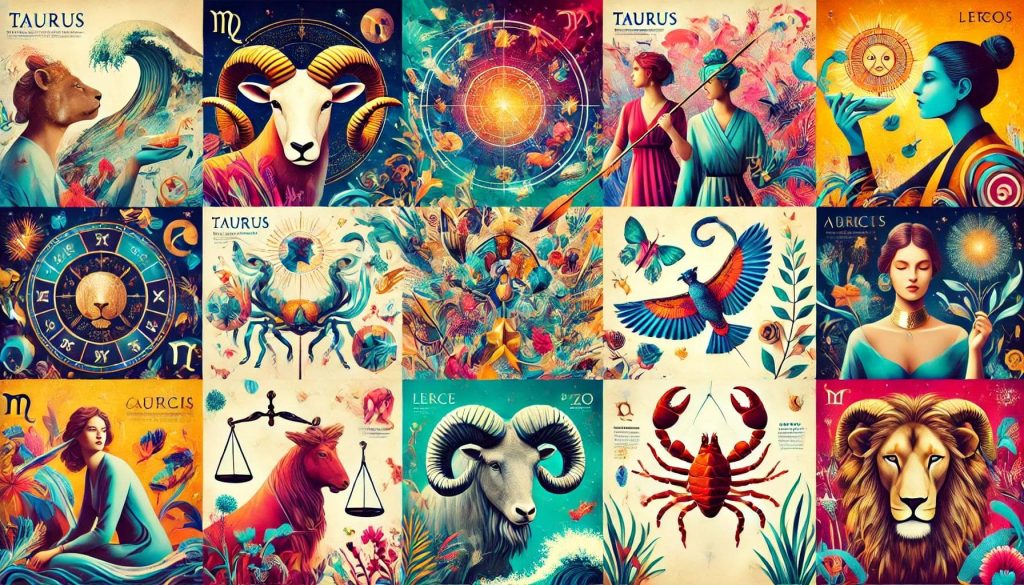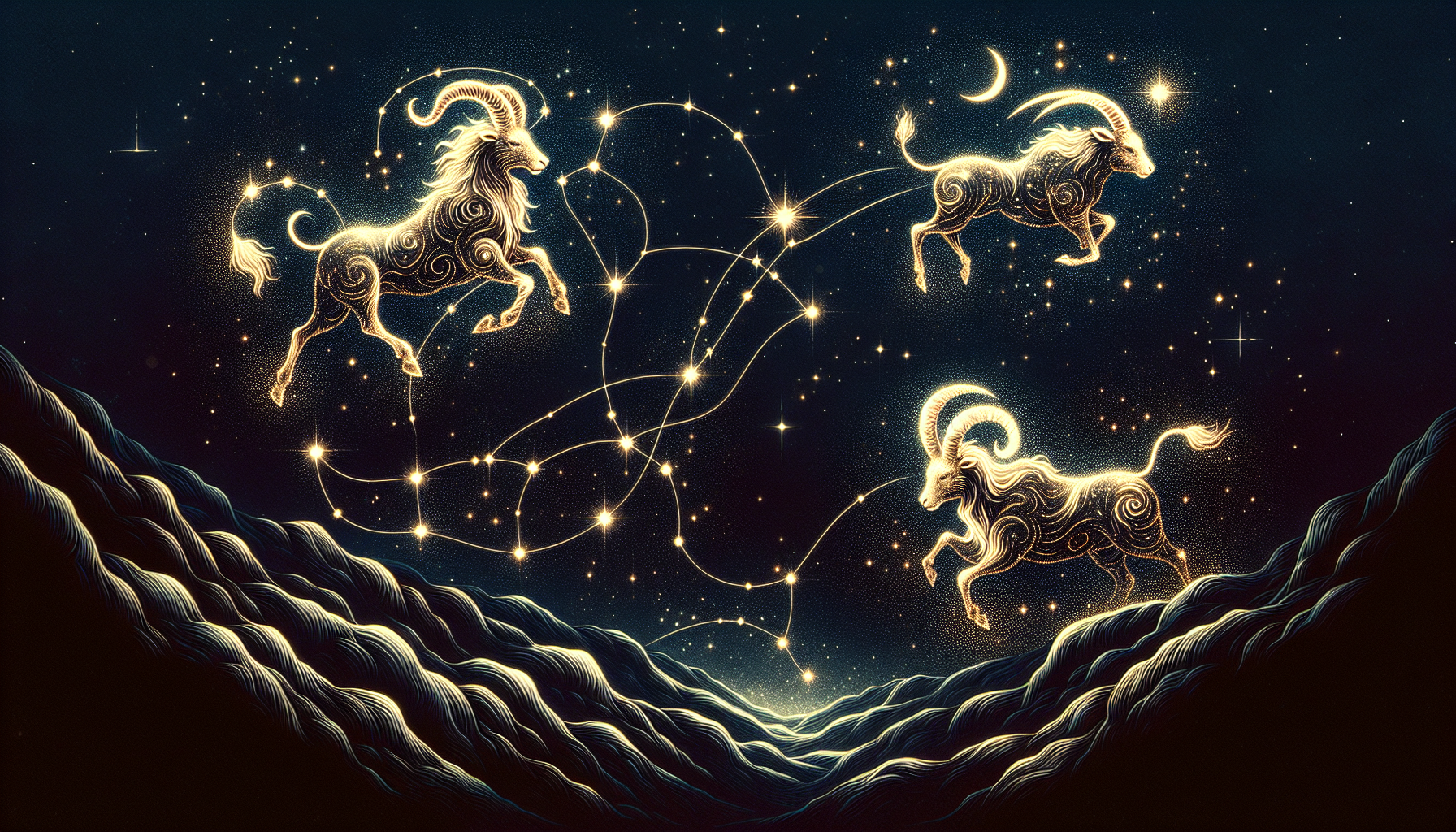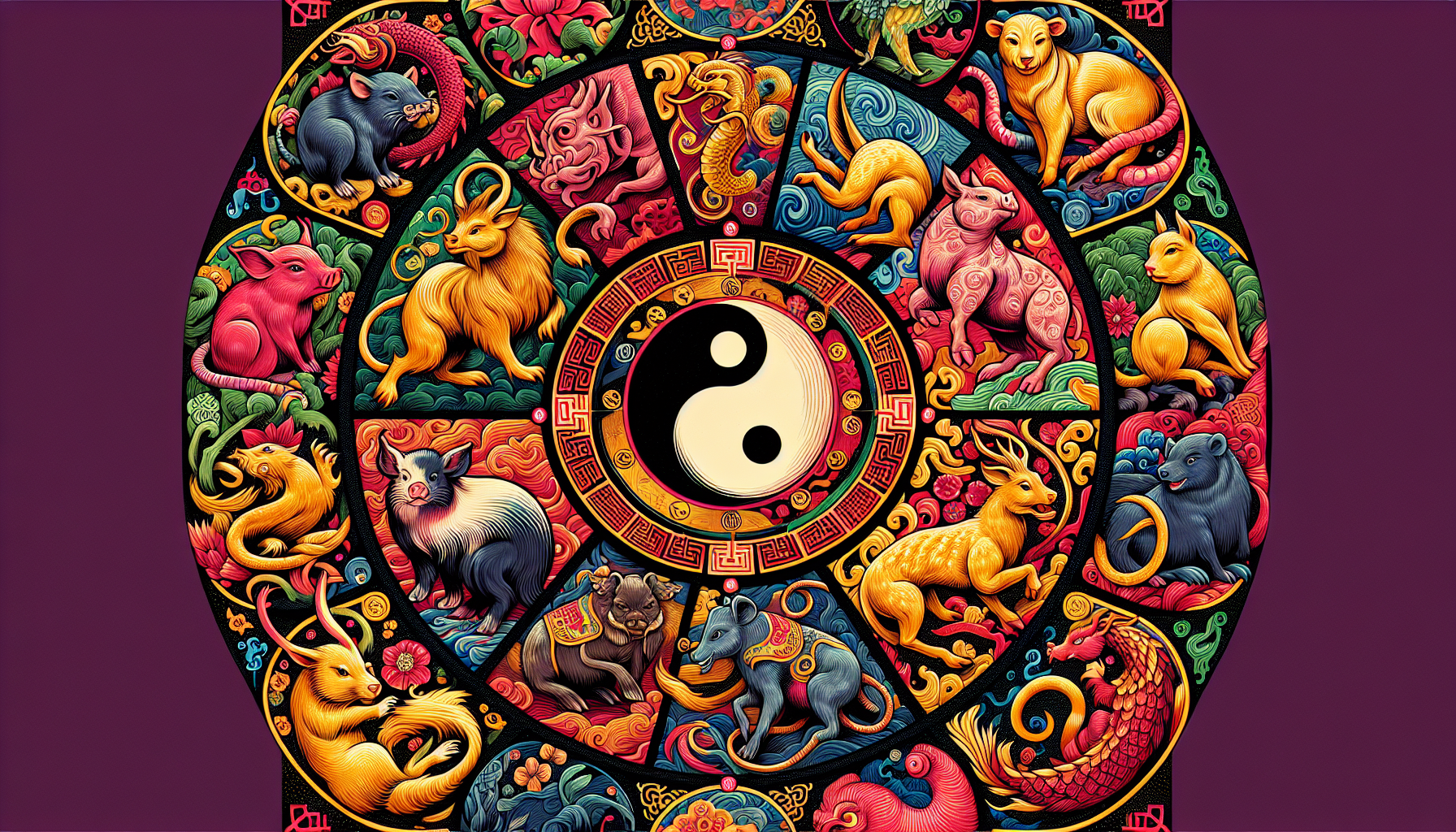
- Key Takeaways
- The Birth of Zodiac Signs
- Ancient Babylon's Contribution
- Influence of Ancient Greece
- Egyptian Astrology and the Zodiac
- Zodiac Signs in Ancient China
- The Role of Indian Astrology
- Hellenistic Synthesis
- Zodiac Signs Through the Middle Ages
- Western Astrology’s Evolution
- Modern Interpretation of Zodiac Signs
- Summary
- Frequently Asked Questions
Where did zodiac signs originate? The journey of zodiac signs, or the origin of zodiac signs, begins in ancient Babylon and spans through various cultures, including Greek and Egyptian civilizations. This article explores the evolution and significance of the zodiac from its early beginnings to its modern interpretations.
Key Takeaways
The concept of zodiac signs originated from the Babylonian system of astrology around the second millennium BC, where the sky was divided into twelve sections, each linked to specific constellations and associated meanings.
Ancient Greek astrology merged Babylonian practices with their own mythology, creating a complex system that linked zodiac signs to specific myths and celestial phenomena; this integration significantly influenced the development of Western astrology.
Despite ongoing scientific criticism, modern astrology remains popular due to its psychological insights and symbolic interpretations, influenced by figures like Carl Jung, and continues to evolve by integrating traditional methods and addressing contemporary themes.
The Birth of Zodiac Signs

Deriving from the Greek word “zodiakos,” the zodiac is a celestial belt extending nine degrees on either side of the ecliptic plane, which is the Sun’s apparent annual path across the sky. It houses twelve constellations, each representing a different zodiac sign. The division of the Earth’s orbit around the sun correlates with the creation of the ancient Zodiac Signs. As the sun, moon, and planets traverse this band, they move through these constellations, creating a cosmic dance that has fascinated humans for thousands of years.
In ancient civilizations like Babylon, Greece, and Rome, astrology was more than just a mystical practice; it was a sophisticated system used to predict the future and understand human affairs. The term “horoscope,” which comes from the Greek words “hora” (time) and “skopos” (observer), reflects the ancient belief that the positions of celestial bodies at the time of a person’s birth could influence their destiny. This practice of casting horoscopes and interpreting the movement of stars and planets was deeply rooted in the culture and daily life of these ancient societies.
Each of the twelve zodiac signs we acknowledge today—Aries, Taurus, Gemini, Cancer, Leo, Virgo, Libra, Scorpio, Sagittarius, Capricorn, Aquarius, and Pisces—originates from a distinct constellation, representing the signs of the zodiac. For example, the constellation Aries, which marks the beginning of the zodiac, was named after the ram that symbolized spring and new beginnings in many ancient cultures. These constellations served as the backdrop for the celestial events that ancient astrologers believed could predict everything from the success of a harvest to the fate of a kingdom. Interestingly, most zodiac signs have their roots in these ancient cultures and their interpretations of celestial events.
There exists a significant link between the zodiac signs and astronomical cycles. The twelve zodiac signs correspond with the twelve months of the year and the twelve constellations that the sun traverses on its yearly journey, also known as the sun’s apparent annual path. This alignment was not just a coincidence but a reflection of the natural order observed by ancient astrologers. They noted that the changing positions of the stars and planets were linked to seasonal changes, agricultural cycles, and important events in the lives of people born under specific signs.
Ancient Babylon’s Contribution
The narrative of zodiac signs genuinely initiates in ancient Babylon, around the second millennium BC. The Babylonians were the first to organize a system of astrology, meticulously observing the heavens and recording the movements of celestial bodies. They divided the sky into twelve sections, each associated with a specific constellation and imbued with particular meanings and symbolism.
Initially, Babylonian astrology concentrated on mundane astrology, focusing on the well-being of the state and the king. The Babylonians believed that the gods communicated their will through celestial omens, and they developed an extensive collection of these omens in texts like the Enuma Anu Enlil. This comprehensive reference work, dating back to the 16th century BC, contained 70 cuneiform tablets filled with over 7,000 celestial omens.
These omens helped Babylonian astrologers predict everything from:
eclipses
seasonal changes
natural disasters
political events
agricultural outcomes
This framework would later influence many other cultures and their approach to astrology.
One of the most significant contributions of the Babylonians to astrology was their method of dividing the sky into twelve areas, each associated with a constellation. This division laid the groundwork for the twelve zodiac signs we recognize today. By the 4th century BC, Babylonian mathematical methods had advanced to the point where they could calculate future planetary positions with reasonable accuracy. This precision enabled them to make more accurate predictions and further solidify the importance of astrology in their society.
Babylonian astrology’s influence reached far beyond its own borders. As this knowledge radiated through interactions with other ancient civilizations, it established the groundwork for the evolution of astrology in ancient Greece, Egypt, and beyond. The Babylonians’ meticulous observations and systematic approach to astrology set the stage for the zodiac system to evolve and flourish in diverse cultural contexts across the ancient world.
Influence of Ancient Greece
Always captivated by the cosmos, the Greeks adopted and modified Babylonian astrology, merging it with their own rich mythology and scientific exploration. They believed that the workings of the cosmos directly affected human well-being, a belief that led them to develop a sophisticated astrological system. The ancient Greeks called the twelve zodiac signs and connected them to their mythology, creating a tapestry of stories and celestial phenomena that continues to captivate us today.
In Greek mythology, each zodiac sign is linked to a specific mythological story, often involving a Greek goddess or god. For instance, the Gemini twins, Castor and Pollux, are celebrated in the constellation Gemini. Pollux, considered the son of Zeus, and his mortal brother Castor were famous for their deep bond. When Castor died, Pollux pleaded with Zeus to let him share his immortality with his brother, and thus, they were immortalized in the stars. Similarly, Cancer, the giant crab sent by Hera, a Greek goddess, to fight Hercules, was placed in the sky by Zeus after Hercules defeated it.
The Greeks also contributed to the development of the zodiac by associating each sign with specific astronomical cycles and seasonal changes. For example, the sign of Leo is linked to the myth of Hercules and the Nemean Lion, one of the twelve labors of Hercules. These mythological stories provided a framework for understanding the movements of the stars and planets, making astrology a vital part of Greek culture and belief systems.
The Greek impact on astrology was deep-seated, combining scientific investigation with mythological narration. Their adaptation of Babylonian astrology laid the groundwork for the zodiac signs to become a central part of Western astrology. By naming the zodiac signs and embedding them in their rich mythological tradition, the Greeks ensured that the legacy of the zodiac would endure through the ages, influencing countless generations.
Egyptian Astrology and the Zodiac

Upon its arrival in Egypt at the end of the fourth century B.C., the zodiac system found a receptive environment in a culture already profoundly in tune with celestial body movements. During the Ptolemaic period (304–30 B.C.), the zodiac signs gained significant popularity among Egyptians. They began to integrate these signs into their own astrological practices, which were closely linked to their religious and cultural beliefs.
One of the most striking examples of the zodiac’s integration into Egyptian culture is the Dendera Zodiac, a celestial map carved into the ceiling of the Temple of Hathor at Dendera. Dating back to the 1st century BCE, this artifact is one of the earliest representations of the zodiac in Egypt and provides a fascinating glimpse into how the Egyptians viewed the heavens. The Dendera Zodiac includes all twelve zodiac signs, illustrating how deeply the concept had been woven into the fabric of Egyptian astrological practices.
Egyptians also adorned their tombs with depictions of their zodiac birth signs, believing that these signs held power in the afterlife. The Temple of Esna is one of only three Egyptian temples where the zodiac is preserved, showcasing the importance of these signs in their religious and astrological traditions. The preservation of zodiac signs in Egyptian temples highlights the cultural significance they held and their role in connecting the earthly and celestial realms.
Zodiac Signs in Ancient China

Offering a fascinating contrast to the Western zodiac, Chinese astrology, with its distinctive zodiac sign system, is intriguing. Instead of constellations, the Chinese zodiac is based on a cycle of twelve animal signs, each representing a year in a twelve-year cycle. This system begins with the sign of the Rat and proceeds through the Ox, Tiger, Rabbit, Dragon, Snake, Horse, Goat, Monkey, Rooster, Dog, and Pig.
The Chinese zodiac is deeply intertwined with the concepts of yin and yang, as well as the Five Elements theory (Wu Xing), which includes wood, fire, earth, metal, and water. Each zodiac year is associated with one of these elements, creating a complex system of interactions that influence the characteristics of people born in those years. For example, someone born in the Year of the Rat under the element of wood would have different attributes than a Rat born under the element of fire.
The Five Elements theory is not just a cornerstone of Chinese astrology but also plays a crucial role in traditional Chinese medicine. Each element is believed to control and generate another, creating a balanced ecosystem that influences health and well-being. This holistic approach to astrology and medicine underscores the interconnectedness of all things, a fundamental principle in Chinese philosophy.
Modern Chinese astrology continues to use sophisticated systems like Ziping and Zi Wei Dou Shu, demonstrating its enduring relevance and complexity. These systems, along with the traditional animal signs and the Five Elements, make Chinese astrology a rich and multifaceted tradition that offers insights into personality, destiny, and the natural world.
The Role of Indian Astrology
One of the oldest astrological traditions, Indian astrology or Jyotisha, is deeply ingrained in the study of the Vedas and the ancient texts that underpin Hinduism. Jyotisha, derived from the word “Jyotish” meaning light, encompasses the study of astronomy, astrology, and the science of timekeeping using celestial bodies. As one of the six auxiliary disciplines in Hinduism, Jyotisha holds a significant place in Indian culture and spirituality.
The earliest texts on Jyotisha, like the Vedanga Jyotisha, date back to the Vedic period and are primarily concerned with the preparation of a calendar for sacrificial rituals. These texts laid the groundwork for later developments in Indian astrology, including the notable early medieval compilations like the Bhat Parara Horstra and Srval by Kalyavarma. These works, dating from the 7th to early 8th centuries, provide a comprehensive understanding of classical Indian astrology.
One of the key concepts in Hindu astrology is the notion of bandhu, which connects the microcosm and macrocosm, reflecting the belief that the universe and human beings are interconnected. This idea is central to Jyotisha, which uses the sidereal zodiac to account for the precession of the vernal equinox within the earth’s orbit. The concept of graha, originally meaning demon, now refers to planets in astrology, highlighting the evolution of terminology and understanding within this ancient practice.
Hellenistic Synthesis
In the cultural crossroads of Hellenistic Egypt, specifically Alexandria, the astrological customs of Babylonian and Egyptian cultures amalgamated, birthing horoscopic astrology. This synthesis incorporated elements from both traditions, including Babylonian planetary exaltations and Egyptian decans, along with the Greek planetary gods. The result was a comprehensive system that laid the foundation for much of Western astrology as we know it today.
Hellenistic astrology was notably developed around the Mediterranean Basin, particularly in Egypt during the late Hellenistic period. One of the significant innovations of this period was the use of the ascendant, known as the ‘horoskopos’ in Greek, and the twelve celestial houses derived from it. This development allowed astrologers to create detailed natal charts, mapping the positions of planets and stars at the time of an individual’s birth.
The focus on the natal chart marked a significant shift in astrological practice, emphasizing the importance of the exact moment of birth in determining an individual’s fate. This approach was deeply influenced by the philosophical and scientific traditions of the Greeks, who sought to understand the cosmos and its impact on human affairs in the broadest sense.
The texts and technical terminology of Hellenistic astrology were primarily written in Greek and occasionally in Latin, reflecting the scholarly nature of this tradition. The blending of Babylonian, Egyptian, and Greek elements created a rich tapestry of astrological knowledge that would influence subsequent generations and cultures.
Zodiac Signs Through the Middle Ages
Astrology assumed a pivotal role in numerous facets of daily life during the Middle Ages, particularly in medicine. Medieval medical practitioners believed that different zodiac signs governed various parts of the body and diseases. For instance:
Aries was associated with the head
Taurus with the throat
Gemini with the arms and shoulders
Cancer with the chest and stomach
Leo with the heart
Virgo with the intestines
Libra with the kidneys
Scorpio with the reproductive organs
Sagittarius with the thighs
Capricorn with the knees
Aquarius with the lower legs
Pisces with the feet
This belief led to the practice of medical astrology, where the positions of the stars and planets were used to diagnose illnesses and determine the best times for treatments.
Astrological practices also influenced the timing of herbal remedies and medical procedures. Herbs were thought to be most effective when collected under the influence of their associated planets. Similarly, procedures like bleeding were believed to be more effective when performed while the moon was in a particular constellation. This blending of astrology and medicine highlights the medieval view of a cosmos in which celestial and terrestrial realms were intimately connected.
However, astrology was not without its controversies. Theological debates arose over the practice, with some arguing that it conflicted with Christian doctrines. Notable figures like Augustine of Hippo challenged the deterministic nature of astrology, suggesting it undermined the concept of free will and divine providence. Martin Luther also denounced astrology, further fueling the debates surrounding its validity and place in society.
Despite these challenges, astrology maintained a significant presence in medieval culture. It was used not only for medical purposes but also for divination and understanding human affairs. The enduring belief in the influence of the stars and planets on earthly events underscores the deep-rooted fascination with astrology that persisted through the Middle Ages and beyond.
Western Astrology’s Evolution
For Western astrology, the Renaissance signified a time of rejuvenation and metamorphosis. During this era, astrology was seen as both a scientific and spiritual pursuit, attracting followers and scholarly critics alike. Giovanni Pico Della Mirandola’s “Disputations Against Astrology” laid out key arguments against the practice, pointing out its contradictions and errors. Yet, figures like Johannes Kepler attempted to reform astrology by integrating the heliocentric model of the solar system, reflecting the era’s complex relationship with the stars.
The 18th century brought significant scientific advancements that began to distinguish astronomy from astrology. These advancements debunked many of astrology’s claims, leading to its decline as a scientific discipline. However, popular belief in astrology persisted, fueled by the rise of new religious movements like theosophism and spiritualism in the 19th century. This period saw a revival of interest in astrology, culminating in the development of sun sign astrology.
Sun sign astrology, which focuses on the position of the sun at the time of a person’s birth, became particularly popular in the late 19th century. This simplified form of astrology was further popularized by the New Age movement and the introduction of horoscope columns in newspapers. The first modern horoscope column was published in The Sunday Express in 1930 to commemorate Princess Margaret’s birth, marking a significant moment in the rise of modern astrology.
Despite its popularity, astrology has faced ongoing criticism from the scientific community. Studies have shown that astrology lacks scientific validity and has not demonstrated effectiveness in controlled settings. Nevertheless, figures like Carl Jung have used astrology as a symbolic language for psychological archetypes, bridging the gap between science and spirituality and ensuring astrology’s continued relevance in modern times.
Modern Interpretation of Zodiac Signs
In contemporary times, astrology has developed to include psychological insights, majorly influenced by Carl Jung’s work. Jung related astrology to mythology in explaining the human psyche, contributing to its modern psychological appeal. This perspective transformed astrological predictions into affirmations of personal beliefs, resonating with individuals seeking meaning and guidance in their lives.
The modern popularity of astrology can also be attributed to confirmation bias, where people remember predictions that come true and forget those that do not. This selective memory reinforces belief in astrology, despite the lack of scientific evidence supporting its predictive capabilities. Additionally, the resurgence of traditional Hellenistic texts has introduced more rigorous methods, challenging modern psychological interpretations and providing new insights into ancient practices.
Astrology’s appeal has also grown within social justice movements, with figures like Chani Nicholas using it to address themes of empowerment and identity. Despite the scientific community’s consensus that astrology is a pseudoscience, its symbolic and interpretive power continues to attract followers, highlighting its enduring cultural significance.
Summary
From the ancient civilizations of Babylon and Greece to the modern era, the zodiac signs have woven a rich tapestry of cultural and astrological significance. Each civilization contributed uniquely to the development of the zodiac, reflecting their understanding of the cosmos and its influence on human life. Today, despite scientific skepticism, the zodiac continues to captivate and inspire, offering a window into our collective quest for meaning and connection with the universe.
Frequently Asked Questions
What are the origins of the zodiac signs?
The origins of the zodiac signs can be traced back to ancient Babylon around the second millennium BC, where they divided the sky into twelve sections, each associated with a constellation and specific meanings.
How did the Greeks influence the zodiac signs?
The Greeks influenced the zodiac signs by adopting Babylonian astrology, integrating them with their mythology and astronomical cycles. This created a rich tapestry of stories and celestial phenomena.
What is the significance of the Dendera Zodiac?
The Dendera Zodiac, dating back to the 1st century BCE, is one of the earliest representations of the zodiac in Egypt and offers valuable insight into ancient Egyptian beliefs about the heavens.
How does Chinese astrology differ from Western astrology?
Chinese astrology differs from Western astrology in its use of a cycle of twelve animal signs representing years and its incorporation of concepts such as yin and yang and the Five Elements theory, creating a complex system of interactions.
What role did astrology play in medieval medicine?
Astrology played a diagnostic role in medieval medicine, with the belief that zodiac signs governed different parts of the body and diseases. This influenced the timing of treatments.
Recent Posts

Sagittarius Personality Explained: Traits, Love & Life
Olivia Marie Rose | March 28, 2025

Guide to the King of Cups: Tarot’s Emotional Wisdom
Aryan K | March 27, 2025

Discover the Emotional World of Cancer: July 8 Zodiac Guide
Aryan K | March 27, 2025

Numerology Compatibility Calculator for Love & Life
Olivia Marie Rose | March 27, 2025

Gigi Hadid Birth Chart: Career, Love & Personality
Olivia Marie Rose | March 27, 2025
Topics
- 4 Digit Angel Numbers
- 5 Digit Angel Numbers
- 6 Digit Angel Numbers
- Astrology and Birth Charts
- Business Astrology
- Career Astrology
- Celebrities and Personalities Astrological Profile
- Children Astrology
- Chinese Astrology
- Different Angel Numbers Meaning
- Double Digit Angel Numbers
- Dreams Interpretation
- Festivals
- Finance Astrology
- Find Baby Names
- Find Best Astrologers
- Gemstones and Birthstones
- Janam Kundli Chart
- Love Astrology
- Marriage Prediction Astrology
- Nakshatra (Constellations)
- Numerology
- Pet Astrology
- Rudraksha Beads
- Single Digit Angel Numbers
- Spirit Animals
- Spirituality and Positivity
- Stars, Planets and Cosmic
- Symbolism
- Tarot Cards
- Triple Digit Angel Numbers
- Understanding Hinduism
- Vastu Shastra
- Vedic Astrology
- Western Astrology
- Yoga and Meditation
- Zodiac Sign Date Calendar
- Zodiac Signs
- Zodiac Signs Compatibility
